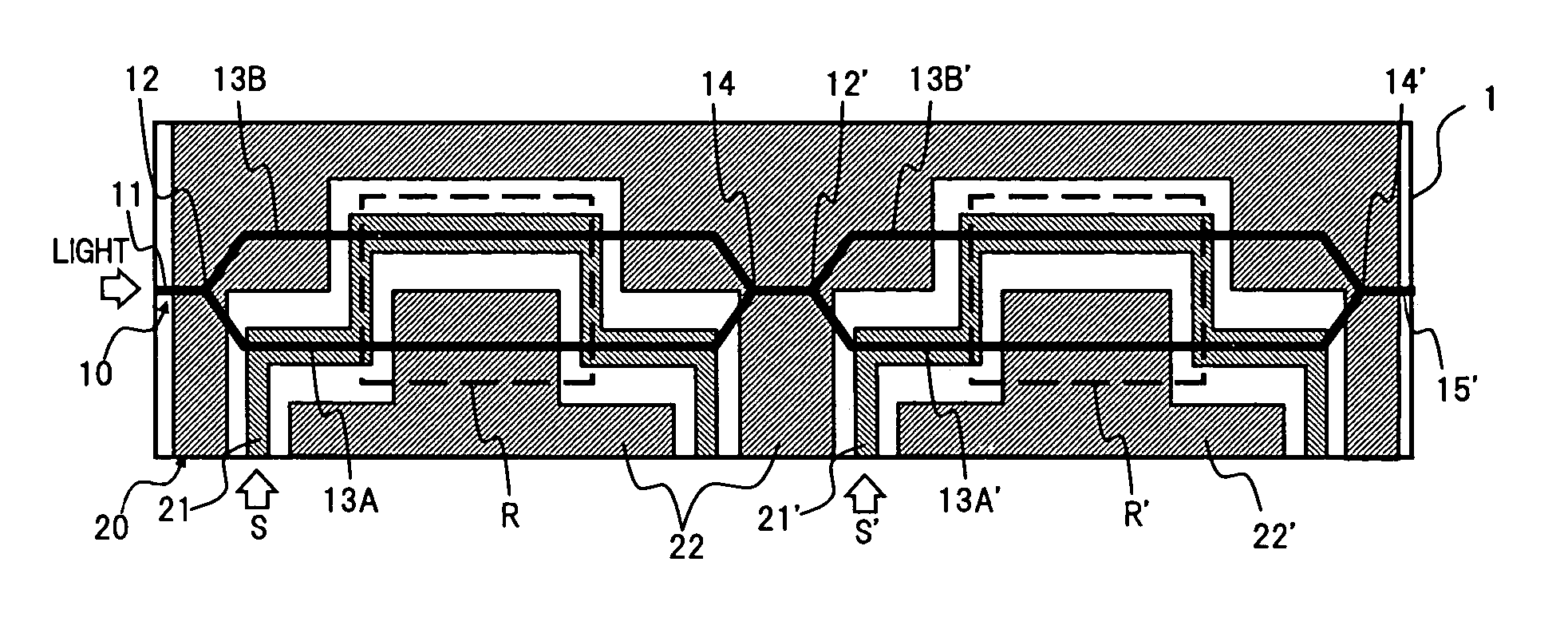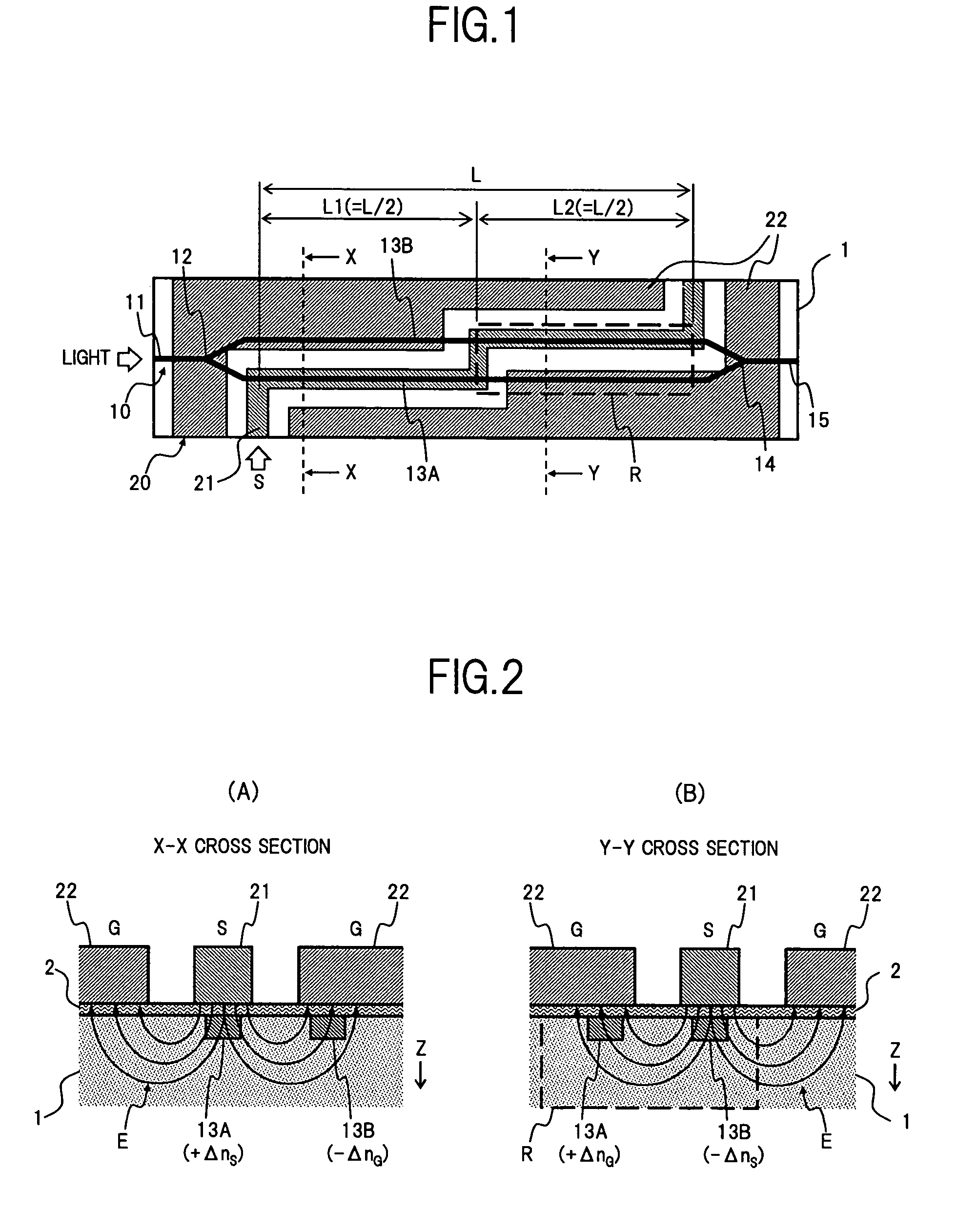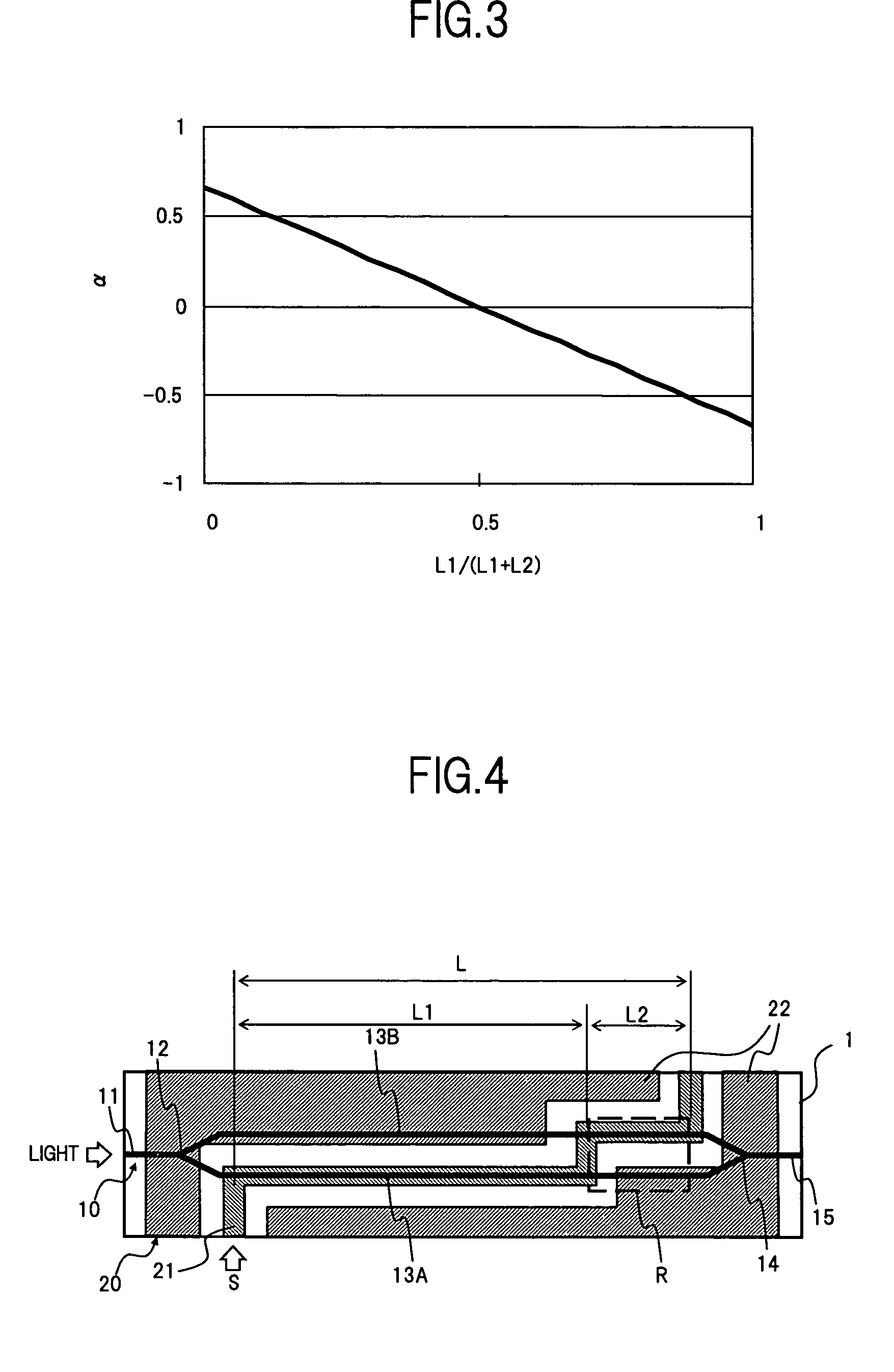Optical modulator
a modulator and optical technology, applied in the field of optical modulators, can solve the problems of high drive voltage, shortening the distance between the signal electrode and the waveguide, and causing the change (wavelength chirping) of the modulated light to degrade the signal waveform after transmission
- Summary
- Abstract
- Description
- Claims
- Application Information
AI Technical Summary
Benefits of technology
Problems solved by technology
Method used
Image
Examples
first embodiment
[0032]FIG. 1 is a plan view showing a configuration of a Mach-Zehnder optical modulator according to the present invention. Further, FIG. 2 is a diagram showing an essential structure of a cross section in each part of FIG. 1, in which (A) is an X—X cross section and (B) is a Y—Y cross section.
[0033]In FIG. 1 and FIG. 2, the optical modulator in the present embodiment comprises a substrate 1 which has an electro-optic effect and is provided with a region R whose polarization direction is inverted, an optical waveguide 10 of branching interference type formed on the surface of the substrate 1, and a coplanar electrode 20 formed on the surface of the substrate 1 via a buffer layer 2.
[0034]The substrate 1 is configured such that the known processing such as the titanium (Ti) diffusion or the proton exchange is performed on a Z-cut LiNbO3 substrate or the like, to form the optical waveguide 10, and thereafter, the polarization direction of the region R (region encircled by broken line i...
second embodiment
[0048]Next, the present invention will be described.
[0049]In the above described first embodiment, the length of the polarization inversion region R has been designed for the purpose of suppressing the wavelength chirping caused in the Mach-Zehnder optical modulator to approximately zero. However, there is a case where a required value of the wavelength chirping is not zero, depending on systems to which the present optical modulator is applied. Therefore, in the second embodiment, an optical modulator corresponding to the above case will be described.
[0050]FIG. 4 is a plan view showing a configuration of a Mach-Zehnder optical modulator in the second embodiment.
[0051]In FIG. 4, the configuration of the present Mach-Zehnder optical modulator differs from the configuration in the first embodiment shown in FIG. 1 in that the length L2 in the polarization direction of the light of the polarization inversion region R formed on the substrate 1 is modified according to a value of the wave...
third embodiment
[0055]Next, the present invention will be described.
[0056]FIG. 5 is a plan view showing a configuration of a Mach-Zehnder optical modulator in the third embodiment.
[0057]In FIG. 5, the configuration of the present Mach-Zehnder optical modulator differs from the configuration in the first embodiment shown in FIG. 1 in that the polarization inversion region R is formed on the center portion in the lengthwise direction of the interaction portion on the substrate 1 so that the non-inversion regions are formed on the front and rear portions (the left and right sides in FIG. 5) of the polarization inversion region R, and the patterning of the coplanar electrode 20 is modified so that the signal electrode 21 is positioned on the parallel waveguide 13A in the non-inversion regions and is positioned on the parallel waveguide 13B in the polarization inversion region R. The configuration other than the above is similar to the configuration in the first embodiment, and accordingly, the descript...
PUM
| Property | Measurement | Unit |
|---|---|---|
| thickness | aaaaa | aaaaa |
| length | aaaaa | aaaaa |
| total length | aaaaa | aaaaa |
Abstract
Description
Claims
Application Information
 Login to View More
Login to View More - R&D
- Intellectual Property
- Life Sciences
- Materials
- Tech Scout
- Unparalleled Data Quality
- Higher Quality Content
- 60% Fewer Hallucinations
Browse by: Latest US Patents, China's latest patents, Technical Efficacy Thesaurus, Application Domain, Technology Topic, Popular Technical Reports.
© 2025 PatSnap. All rights reserved.Legal|Privacy policy|Modern Slavery Act Transparency Statement|Sitemap|About US| Contact US: help@patsnap.com



